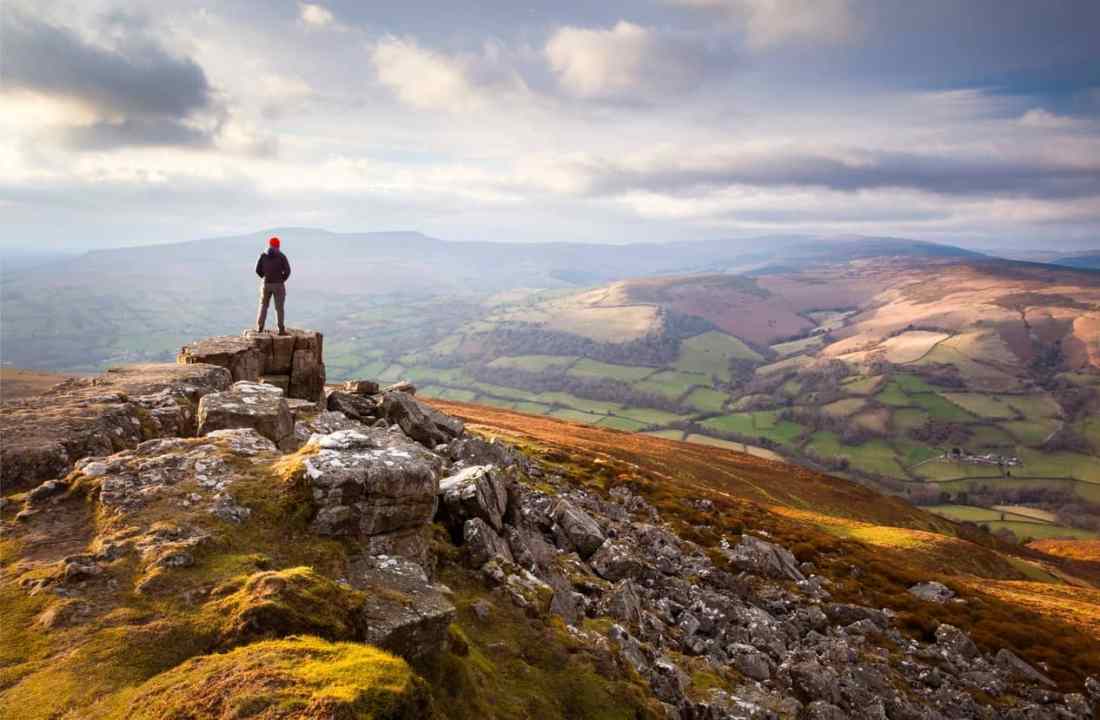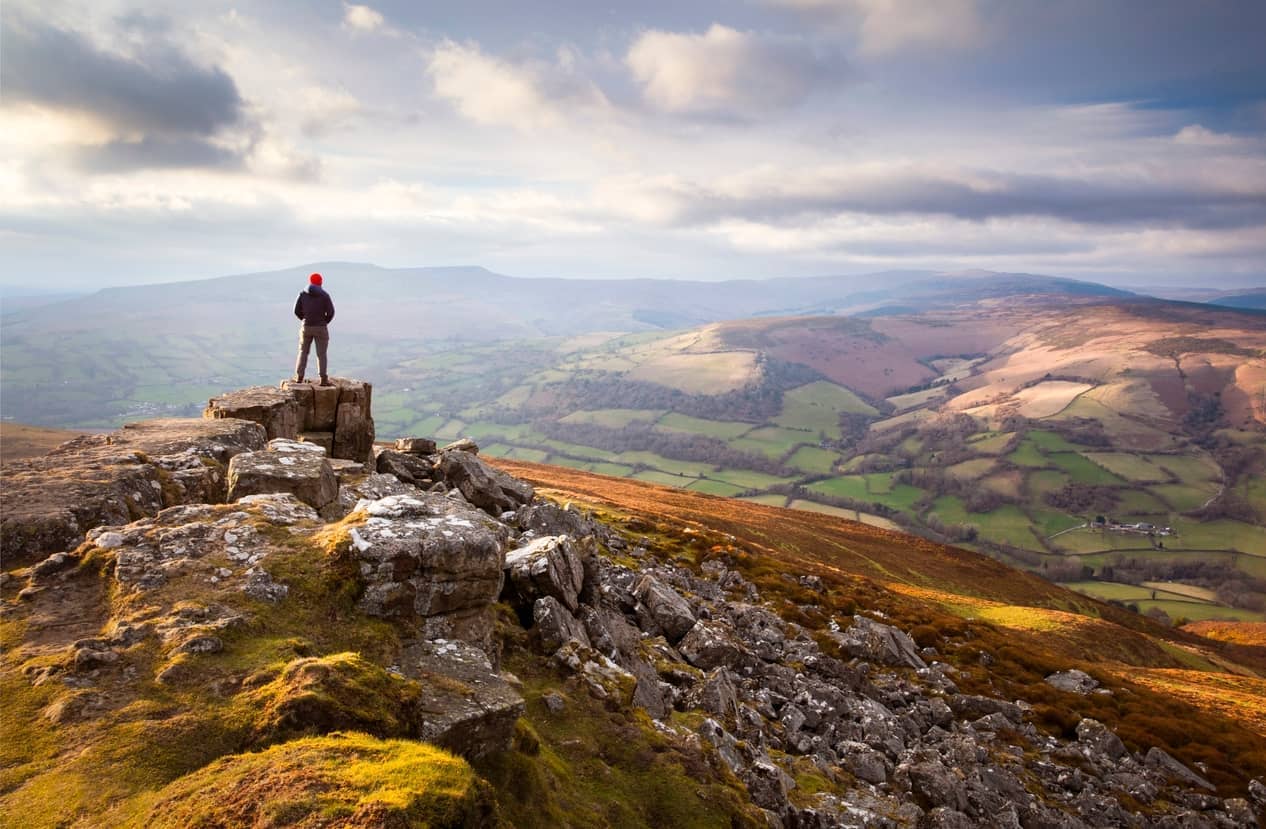On a gauzy wintery day I am half way up Scafell Pike in the Lake District in an effort to climb the tallest peaks of England, Wales, Northern Ireland and Scotland and discover what so many seek up there.
I am not alone. Over a million people climbed one of the peaks this year, with 700,000 making for Snowdon, where summer saw 45-minute queues at the top. Scafell drew 250,000, Ben Nevis more than 160,000 and Slieve Donard in County Down is only relatively quiet, with an annual 100,000 people walking its granite trails.
Each mountain now requires constant tending by path builders, litter pickers, repair teams and rescuers who fret they are being overrun. No wonder. In these pandemic years we have come to worship a Trinity of nature, exercise and domestic travel. The result? Mass processions to such peaks. So where better to understand who we are and how we are than on these summits?
The surroundings of these mountains are as beautiful as they have been since the end of the last ice age. Wasdale below Scafell lies softly. The Snowdon range erupts between hills and roiling weather. Slieve Donard, named after a hermit said to have lived on its summit, still meditates over a green curve of Dundrum Bay. Ben Nevis rises, in vast and infinite detail, out of the tiniest curl of gorse flower at its foot.
‘What’s the race?’ I ask a jostle of scrabbling figures between Great Gable and Scafell. ‘Lakeland Four Passes!’ they cry. Further along Scafell’s flank it starts to rain as a platoon of Generation Z traverse a vertical ravine. The gleeful awe of the Romantic sublime rings out in laughter, squeals and swearing.
Above, the sound of migrating geese echoes through the mist. Gabbles of voices answer them ahead, and there is the main path — and there we all are, in our hundreds. We are so numerous that some are laughing giddily.
The same scene played out while climbing Ben Nevis. Lines and lines of us zig-zagging through the rain. We were all ages, backgrounds, creeds and colours — I exchanged greetings with children and pensioners, with couples gay and straight, with faces from all five continents and figures of every shape. Many of us were not in any kind of athletic form. Some of us were puffing, some heavy, many pained.
The dialect of our pageant was ‘Alright?’ ‘Hello!’ ‘Keep going!’ ‘Sorry! ‘Scuse me!’ and ‘Hi!’ in every accent and kind of English. We grinned through stitches and blisters, and mighty pilgrimages we made.
On Ben Nevis there was a veteran of HMS Sheffield, sunk during the Falklands war. Two friends were climbing to raise funds for MIND, the mental health charity. Many of us were retired, picking our ways ever so carefully, wary of any fall. Some coaxed or carried dogs, which made others pause and smile. One man walked his partner up as far as she wished to go, walked her down again, turned and came back up.
We were all aware that we were a quixotic parade, some prepared for mountain survival, others under-shod in trainers. One figure on Ben Nevis struck me particularly. She was not young, not old and not in company. She had walking poles and she went immensely slowly. I have hated heavy steps up big hills too, and made it up and down Munros only because I was with friends. She climbed the highest without anyone by her side.
At the top, for a moment, the mists cleared — not enough for us to gaze out over leagues of rolling peaks, but so that suddenly and starkly we saw the sky, a silvered sun, each other and ourselves. Now fog and rain came in again. We whooped and laughed and staggered about. Still slowly, so slowly, the stoic figure came.
Her purpose was surely mighty. Many of us walked in someone’s memory, some for charity, all in hope of the same achievement. I have rarely seen so many diverse people so identically uplifted as on those crowded tops. The range of our daily troubles was unimaginable, but atop Scafell, as on all four, our only evident fear was falling off. We were glad we were all there. Not even the virus could scare us.
Each peak provided this solidarity and each had its own surprise. On Snowdon it was Bwlch Main, ‘narrow pass’, an arête like a battlement ridge, a couple of metres wide, between two vast depths of space. On Slieve Donard it was the astounding proximity and fellowship between hills and coasts we call Scotland, England, Wales and Ireland. Knowing nothing of our flags and folderol, a matching archipelago of mountains, marine light and gentle bays echo and reflect one another across a common sea.
If I were going to paint a portrait of a shared spirit, something which transcends all passports and borders, all heritage and circumstance, something which links all of us who find ourselves in this crumble of islands on the edge of the Atlantic – well. I did not actually see her reach the summit of Ben Nevis. But I do know she was there.
Horatio Clare presents the Four Peaks Sound Walk on Radio 3, beginning on Christmas Day







Comments